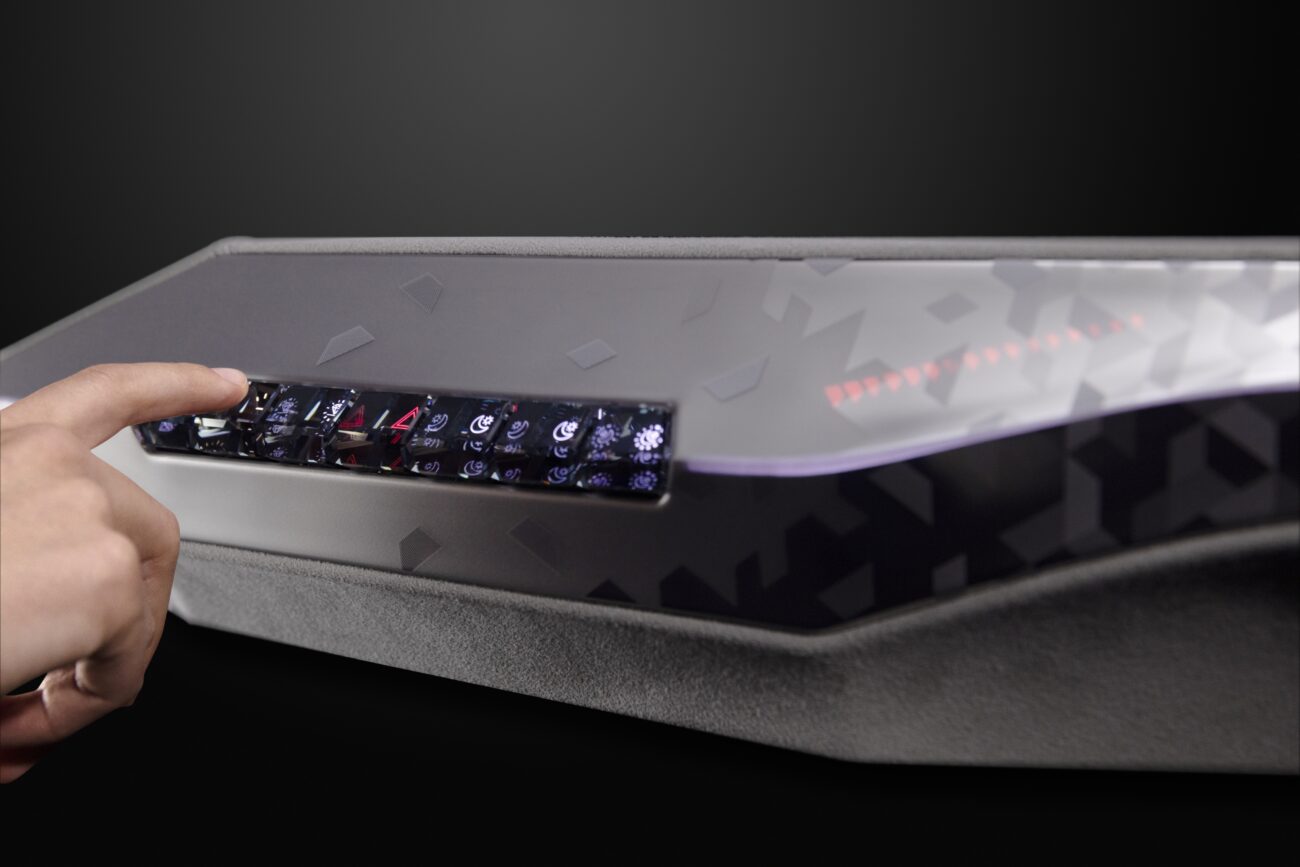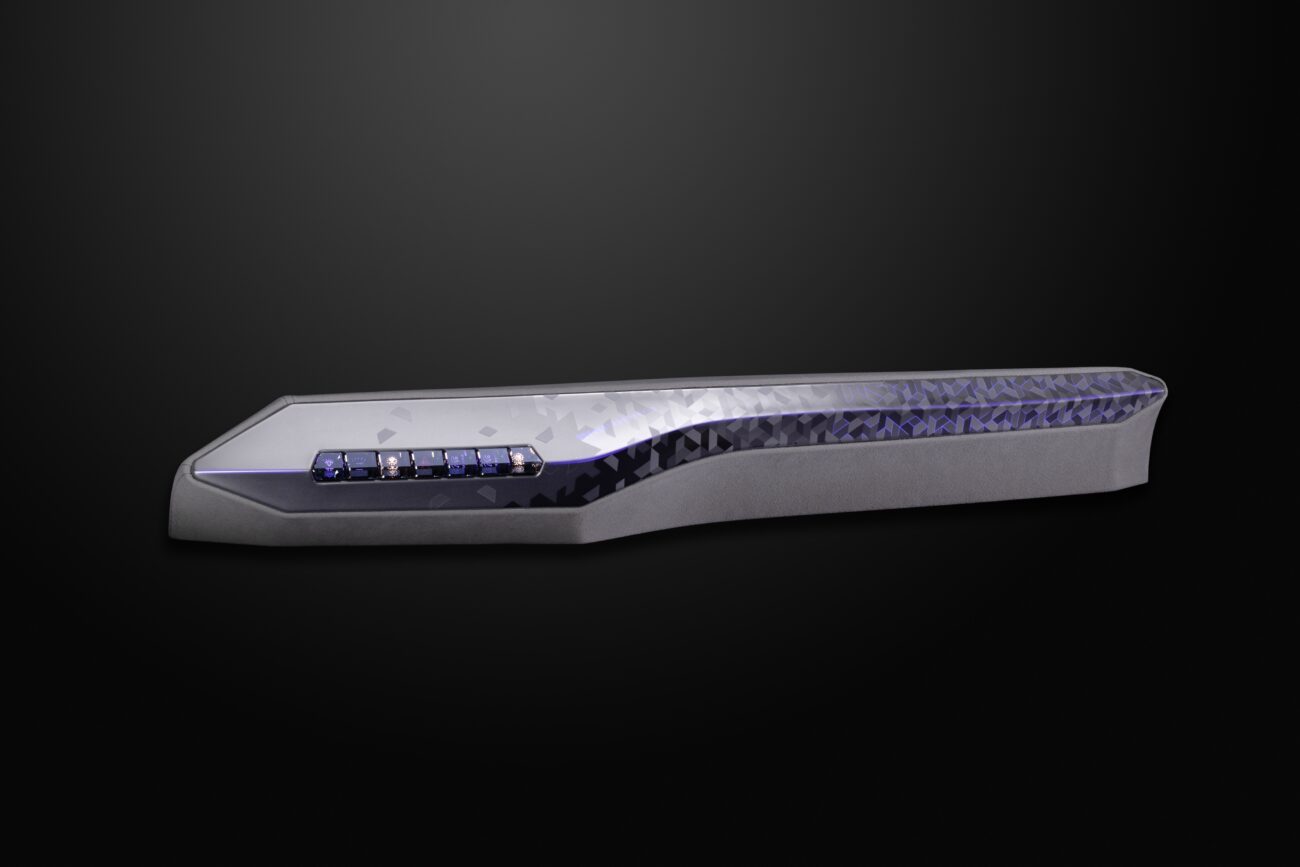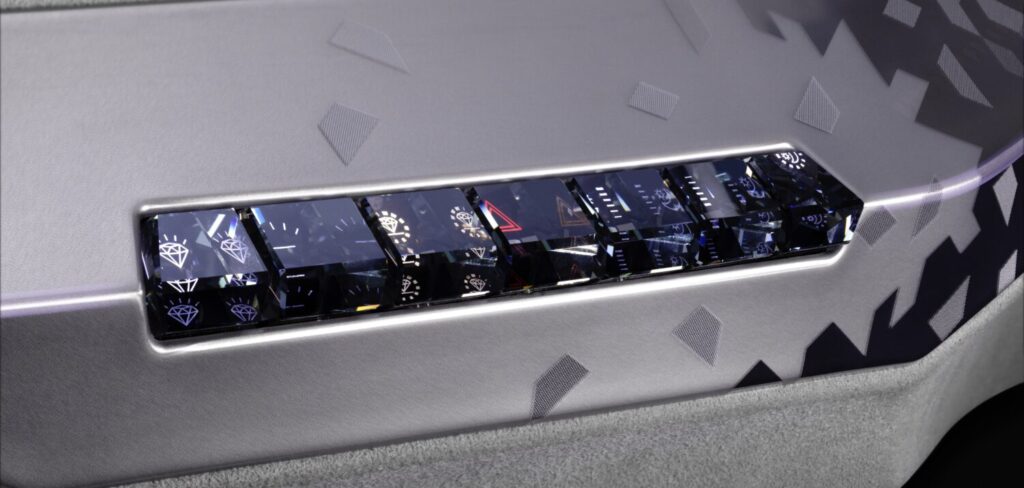Plastic surface specialist Leonhard Kurz has previewed an innovative automotive HMI design at the Consumer Electronics Show (CES) in the USA, developed in conjunction with Swarovski and featuring an interface with color-matched crystals and integrated smart sensors.
“The HMI panel in a day-night design reveals its secrets only after a closer look and never fails to create wow effects. We have developed a concept that not only meets, but even exceeds future requirements. The combination of gravure and silk-screen printing enables top-class surface designs, for example for metallization or real-carbon looks,” said Jörg Stierand, head of divisional sales management, automotive, Kurz.
The HMI concepts demonstrated a variety of design options across three versions.
‘Lounge’ mode is characterized by a luxurious design in a subtle brown with shimmering gold effects. Certain areas in the middle of the golden surface light up in rich magenta, fiery orange or warm violet tones. The light and color designs can be changed using the touch control function integrated into the decor.
The ‘Dark’ mode has a sportier design and uses crystals in a smoked glass look. A classic black adorns the surface of the component. Backlighting effects conjure up special effects with atmospheric color highlights – for example, in bold red or fresh green.
The ‘Light’ mode, on the other hand, relies on cool bright shades. The surface of the demonstration device boasts geometric patterns, which can also be highlighted with different light designs.
All versions of the HMI panel use crystals from Swarovski, which appear to be mirrored at first glance. Thanks to the use of ‘Shy Tech’ functionality, the integrated icons only become visible and reveal the stored functions when the user’s hand approaches.
 “We are very pleased about our partnership with Kurz and that we are collaborating on such pioneering projects,” noted Peter Widmann, SVP and MD at Swarovski Mobility. “In the coming years, the boundaries between design and functionality will become increasingly fluid. Our precision-cut crystals are not only attractive, decorative elements but can also be integrated as functional components. In this way, we are already setting the course today for the successful implementation of the automotive trends of tomorrow.”
“We are very pleased about our partnership with Kurz and that we are collaborating on such pioneering projects,” noted Peter Widmann, SVP and MD at Swarovski Mobility. “In the coming years, the boundaries between design and functionality will become increasingly fluid. Our precision-cut crystals are not only attractive, decorative elements but can also be integrated as functional components. In this way, we are already setting the course today for the successful implementation of the automotive trends of tomorrow.”
Key to the HMI’s operation is the integration of capacitive sensors into the panel covering the crystals. Both the substrate and the sensors themselves are characterized by their high transparency, allowing the crystals to take center stage. At the same time, Kurz notes that the sensors – consisting of wafer-thin metal-mesh silver structures – are particularly robust and can be flexibly adapted to a wide range of component geometries. Two touch sensors are integrated into the panel. One operates the functions of the crystals via direct touch functionality and also serves as a proximity switch. Another slider operates the ambient lighting of the panel.
The design was made possible thanks to a Print Mold Design (PMD) process from Burg Design. Using this technology, three-dimensional decors could be created with maximum design freedom thanks to a special injection molding technique. In addition, components manufactured using PMD can be provided with a range of backlighting effects.




